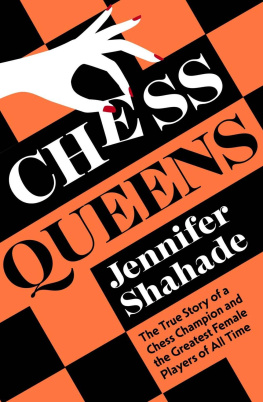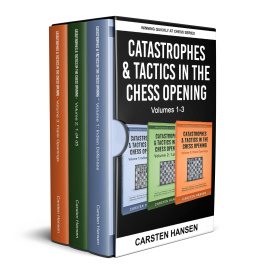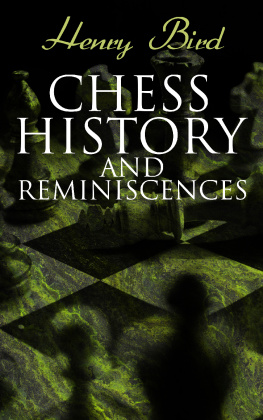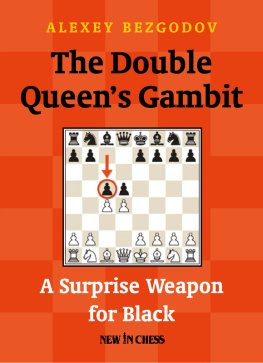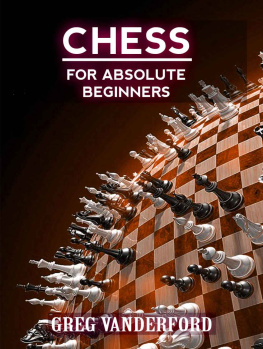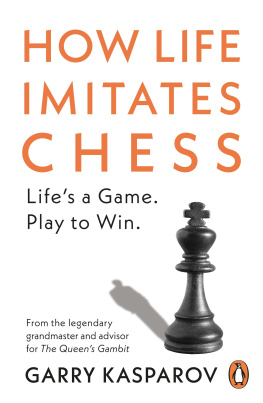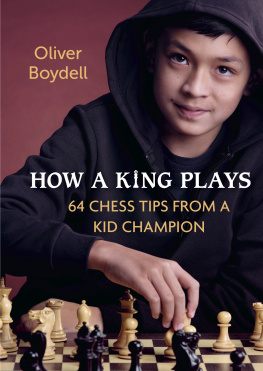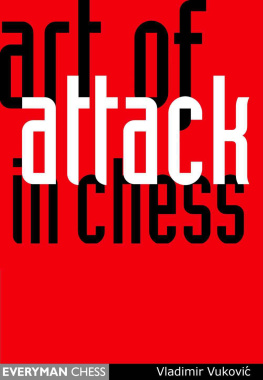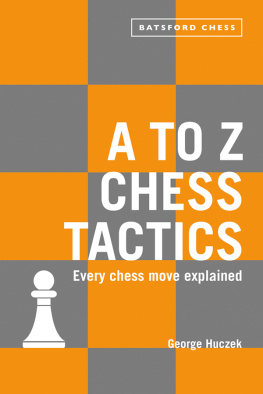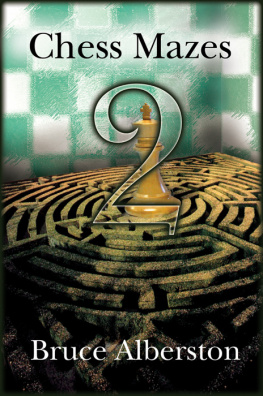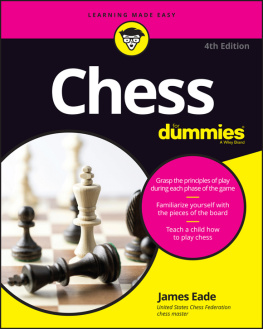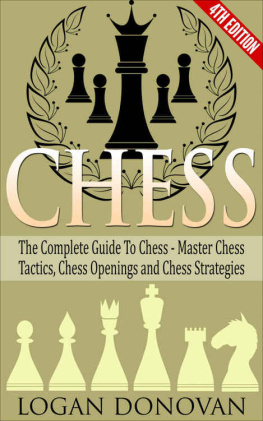Jennifer Shahade - Chess Queens
Here you can read online Jennifer Shahade - Chess Queens full text of the book (entire story) in english for free. Download pdf and epub, get meaning, cover and reviews about this ebook. year: 2022, publisher: Hodder & Stoughton, genre: Non-fiction. Description of the work, (preface) as well as reviews are available. Best literature library LitArk.com created for fans of good reading and offers a wide selection of genres:
Romance novel
Science fiction
Adventure
Detective
Science
History
Home and family
Prose
Art
Politics
Computer
Non-fiction
Religion
Business
Children
Humor
Choose a favorite category and find really read worthwhile books. Enjoy immersion in the world of imagination, feel the emotions of the characters or learn something new for yourself, make an fascinating discovery.
- Book:Chess Queens
- Author:
- Publisher:Hodder & Stoughton
- Genre:
- Year:2022
- Rating:5 / 5
- Favourites:Add to favourites
- Your mark:
- 100
- 1
- 2
- 3
- 4
- 5
Chess Queens: summary, description and annotation
We offer to read an annotation, description, summary or preface (depends on what the author of the book "Chess Queens" wrote himself). If you haven't found the necessary information about the book — write in the comments, we will try to find it.
Chess Queens — read online for free the complete book (whole text) full work
Below is the text of the book, divided by pages. System saving the place of the last page read, allows you to conveniently read the book "Chess Queens" online for free, without having to search again every time where you left off. Put a bookmark, and you can go to the page where you finished reading at any time.
Font size:
Interval:
Bookmark:
The True Story of a Chess Champion and the Greatest Female Players of All Time

www.hodder.co.uk
First published in the United States as Chess Bitch in 2005 by Siles Press, a division of Silman-James Press
Revised edition first published in Great Britain in 2022 by Hodder & Stoughton
An Hachette UK company
Copyright Jennifer Shahade 2005, 2022
The right of Jennifer Shahade to be identified as the Author of the Work has been asserted by her in accordance with the Copyright, Designs and Patents Act 1988.
Cover image: Hand illustration @ Shutterstock.com
Cover design by Jo Myler @ Hodder & Stoughton
All rights reserved.
No part of this publication may be reproduced, stored in a retrieval system, or transmitted, in any form or by any means without the prior written permission of the publisher, nor be otherwise circulated in any form of binding or cover other than that in which it is published and without a similar condition being imposed on the subsequent purchaser.
A CIP catalogue record for this title is available from the British Library
Hardback ISBN 9781399701372
Trade Paperback ISBN 9781399701396
eBook ISBN 9781399701402
Hodder & Stoughton Ltd
Carmelite House
50 Victoria Embankment
London EC4Y 0DZ
www.hodder.co.uk
To my father, Mike Shahade, for making me a chess player, my mother, Sally Solomon, for making me a writer and in memory of my coach, Victor Frias, for making me a champion.
And to Daniel and Fabian, for making me happy.
Contents
You can double tap images to increase their size. To return to the original view, just tap the cross in the top left-hand corner of the screen.
R ecently I conducted a poll: I asked hundreds of aspiring chess girls what they liked about the game. Most of them gave multiple answers: winning, meeting friends, the intrinsic beauty of checkmate. Some had practical reasons, like scholarships. But one twelve-year-old girls response stuck out the most: Love to whip obnoxious boys.
Beth Harmon, the hero of the book and TV series The Queens Gambit, embodied that ruthless spirit. In her seafoam silk dress, with a withering stare, Beth seduced hundreds of millions of viewers into the power of the Sicilian Defense and the joy of smothered mate. Grandmaster Harmon showed how dangerous it is to underestimate a womans mind, because she will checkmate those obnoxious boys.
The chess in The Queens Gambit was more accurate than anything Ive ever seen on screen, from the intensity of a chess staredown to the globetrotting glamour of a top grandmaster on tour. The popularity of the show caused a worldwide shortage of chess sets, and inspired new devotees from all over the world, of every age and gender. Chess champion streamers like Anna Rudolf, Qiyu Zhou and the Botez sisters saw their viewerships multiply in the frenzy, leading to sponsorship deals and a richer era for chess. Content creators studied Beth Harmons games for each nuance and tactic, from opening finesses to endgame artistry.
But the TV show was fiction.
Chess Queens is the true story of the women and girls who broke down barriers to become chess champions. They resisted federations that barred them from playing against men. They protested the skewed prize funds that offered female chess players ten times less than men. They shot back at organizers who asked if they were rated 2550 for women. They conquered minds on the board, and changed minds off of it.
Chess Queens is also my story I spent my teens and early twenties travelling the world, battling on the chessboard, while coming of age. I celebrated my sixteenth birthday between chess games in Iceland, and chased the International Master title while crashing at hostels in Hungary. I explored Turkish baths and nightclubs at my first Chess Olympiad and played a World Championship at the Kremlin in Moscow.
Connecting with people of all different backgrounds, ages and genders over the chessboard reminded me that while a few of games of chess could tell us which player was better, in life nobody was better than me, and nobody was worse than me. As the Italian proverb goes, at the end of the game, the king and the pawn go into the same box.
I totally lose myself when engrossed in a chess position. As a teen and young adult, this was precious. Wrapped up in a middlegame, I didnt care about what a guy thought about me, how popular I was, or if I was going to ace or fail a test. Those pure flow experiences taught me that true happiness was not just about avoiding pain and seeking pleasure, but also about deliberate focus.
It wasnt all joy, friendships and checkmates. I encountered sexism and old-fashioned attitudes, and came up hard against some of my own weaknesses in the game itself, which ranged from a lack of confidence to impatience. The chessboard became a mirror for my mind, and I had to learn to like what I saw, even when it wasnt perfect.
Chess Queens has a precursor: Chess Bitch. I wrote that earlier version of the book in 2005, just after I had won my second US Womens Chess Championship. On a bus in Atlantic City, I told my dad that the racy title of my first book aggravated some chess fans. It was even censored on many platforms, including the New York Times. My dad thought for a minute and then said I should rename it Checkmate, Asshole! Chess Bitch was a fitting title at the time I wrote about things in the chess world that were unfair and sexist but that I sometimes felt too agreeable to shout out. The title was my call to action: a reminder to tap into my own rage.
And that flame lives on. Chess Queens honors the growing number of female champions all over the world, while maintaining the fiery spirit of the first edition. This is an important time for all chess queens. While women have more power in chess than weve ever had before, we are still vastly outnumbered. And were also outnumbered in many other arenas, from politics to coding to the boardroom.
I believe that chess is a gateway for women into other fields where were underrepresented. When I started playing poker seriously, I was often the only female at the table. I preferred to see other women but I also knew I could handle being the only one. Chess, like poker, is all about making decisions over and over again, even when uncertain, even when pressed for time. I believe in the power of women and gender minorities to make those choices on and off the board and the importance of cultivating and celebrating those decisions.
Resistance to female aggression in chess dates back to the 15th century, when the queen turned from the weakest piece on the board, only able to move one square diagonally, to the strongest, sweeping the board in one stroke. That game was at first referred to as the madwoman chesss game, mocking the powerful queen as crazy. Once the game was widely adopted, the mad and the woman were dropped and now its just chess. The potent queen changed the game for the better, but her credit was quickly removed.
There is still plenty to be mad about in chess, from the relentless sexualization of female players to discourse erasing trans and non-binary identities. Shallow questions about womens supposed inferiority persist, while systemic issues like childcare, racism and safety are minimized.
Bitch may have been dropped from the title, but the chess queen was mad centuries ago and shes still mad today. The book has changed in far more than title. It has been significantly reshaped, with updates on each chapter. Opinions are revised by new evidence and experiences, and players are added to the roster of impressive queens. Youll learn about the Holocaust survivor, Isabelle Choko, who was rescued from the concentration camp Bergen-Belsen when she weighed just 55 pounds she made a full recovery and later became the French Womens Champion. Lyudmila Rudenko, the second Womens World Champion, will inspire you with her wins, but even more with her heroism in World War II. Koneru Humpy, the Indian star who broke the record for the youngest female to earn the Grandmaster title, tells us why she feels freer when playing Open events. Youll meet the Ugandan chess star, Phiona Queen of Katwe Mutesi, who became an international symbol for resilience.
Font size:
Interval:
Bookmark:
Similar books «Chess Queens»
Look at similar books to Chess Queens. We have selected literature similar in name and meaning in the hope of providing readers with more options to find new, interesting, not yet read works.
Discussion, reviews of the book Chess Queens and just readers' own opinions. Leave your comments, write what you think about the work, its meaning or the main characters. Specify what exactly you liked and what you didn't like, and why you think so.

